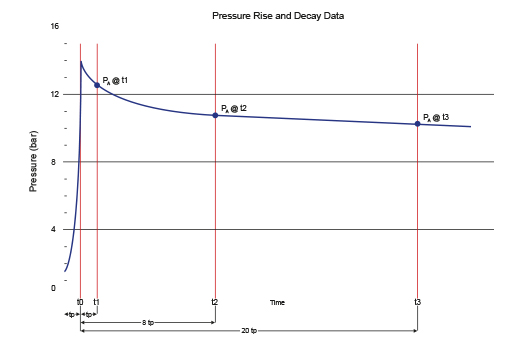In one form or another, and across many industries, hundreds of pressure tests are completed globally each day. In 2000, BS EN 805 was published and for the first-time specific criteria for assessing the acceptability of different pipeline systems was introduced. It was decided to adopt one procedure to test all new PE and PVC water and sewerage pressure pipelines laid in the U.K. and another method for ductile iron, steel, and GRP.
BS EN 805 gave advice on different test methods that may be used to assess pipelines for leakage. Prior to 2000, these methods were not mandatory, it was left to the engineer/client to choose the most appropriate procedure
The current Water UK Information and Guidance Note, IGN 4-01-03 (rev 2 Oct 2015) was originally published in March 2011 and has been extensively adopted by the UK Water Industry and its contractors. In this article we look at the positive impact of IGN4 under four main headings:
What is pressure testing, why is it important?
A hydrostatic pressure test determines the strength of a pipeline and its ability to withstand pressure and transfer fluid. By applying pressure to a section of pipe and monitoring as this changes over time, the integrity of the pipe, any connections between sections and other components such as valves can be tested, and any weaknesses or leaks identified.
Using this data the maximum capacity of the pipeline can also be established. Under IGN4 this test also ensures that industry requirements are met.
What was it like before IGN4?
Prior to the introduction of BS EN 805, pipelines were tested in various means, common methods included pressurising the pipeline for only a short period of time. Digital pressure gauges and data loggers were not readily available or affordable which resulted in large analogue dials being used.
Without a specific standard, there was also a very relaxed approach to pressure testing especially before leakage become a key challenge for the industry.
Why that didn’t work for the industry
With a lack of access to digital pressure gauges and data loggers, it was impossible to raise the standard in testing. In addition, there was no traceability of tests, and with the commercial pressure to complete projects, there was a risk that contractors could be optimistic in their interpretation of the data available.
Even with the best intentions, an oversight of the pressure reading or the time that this pressure reading is taken could result in passes that should fail or even failures that should pass.
Other things that can affect the result of a test but that were not considered at the time could be traffic above the ground creating pressure on the system, or temperature changes on pipes that are exposed to the elements. Through the vast research that has been completed since we now know it is important to capture as much information as possible for you to allow to see if there are any factors (not just including leakage) that are affecting the results of a pressure test.
What does good look like now?
Since 2000, the utility industry has changed beyond recognition, the “us and them” mentality is long gone in favour of partnerships, collaboration, and alliances where all parties including the public (as the ultimate end-client) benefit from working together.
First, the human element of the process needs to be right, experienced, fully trained teams are essential as pressure testing is both an art and a science.
How these teams interact with the client is also hugely important, modern best practice in pipeline pressure testing should be fully transparent, where any issues are identified this needs to be communicated immediately.
Data transparency is now available with data being digitally recorded on calibrated equipment and logged so that it is available for future audit.
This data is typically captured in 20-second increments including time, pressure, temperature, flow (key for calculating any air contents within the pipe), and finally the GPS position of the equipment to provide the added level of accountability.
On top of the above points, it is also essential to have access to the correct sized pumping equipment as the ramp-up time is a critical factor when testing PE pipelines.
We complete all testing works to IGN4 and have dedicated teams who are fully trained and equipped to support you across the whole of the UK and Ireland.
For more information, contact the team on 01896 663 330 or email info@pantonmcleod.co.uk
Keep up to date with all our latest news via Twitter. Follow us at Panton McLeod


